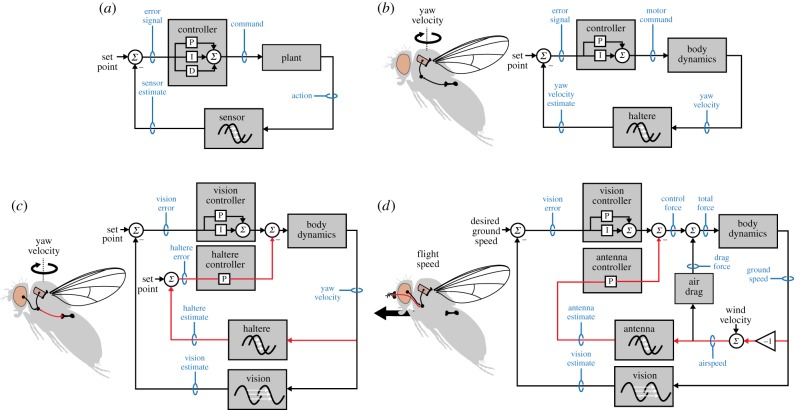Figure 4.
Control theory models of flight stabilization reflexes in Drosophila. (a) General from of simple proportional, integral and derivative (PID) feedback controller. In this and all other panels, delays are only indicated for the sensor block, although in actual systems they might occur throughout the feedback loop. (b) A simple PI controller for yaw velocity, based on [68]. (c) Another model of yaw stabilization that incorporates both visual and haltere feedback, based on results of [84,90]. The embedded loop using short-delay haltere feedback (red traces) acts to stabilize the outer loop using long-delay visual feedback. The haltere loop increases the stability of the vision loop by adding damping to the body dynamics. (d) A model for speed control based on [91]. As in yaw velocity controller shown in (c), a long-delay visual feedback loop is stabilized through the action of a short-delay mechanosensory loop (red traces), in this case mediated by the antennae. In this model, the action of the antennal loop in augmenting the passive damping of the system (indicated by ‘air drag’) is shown explicitly.

